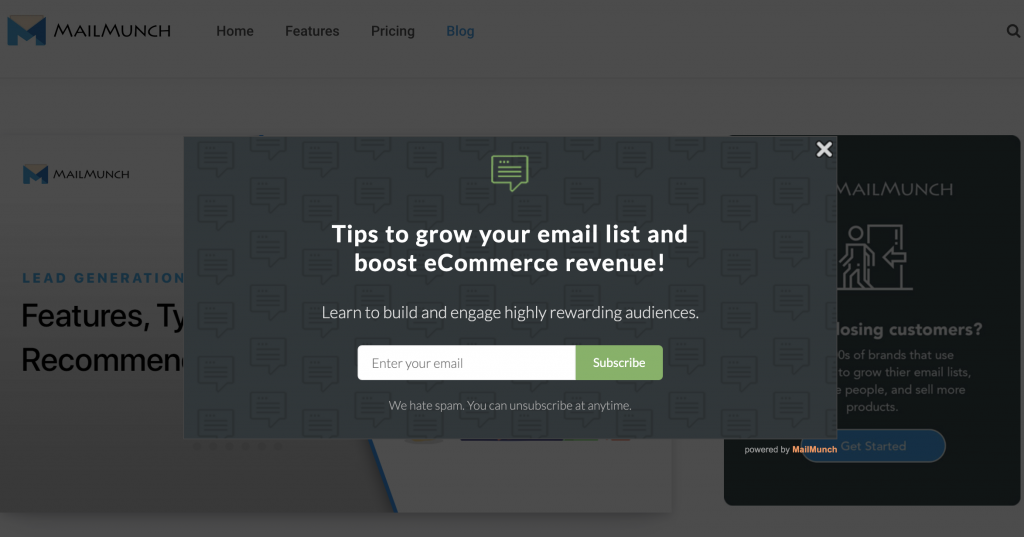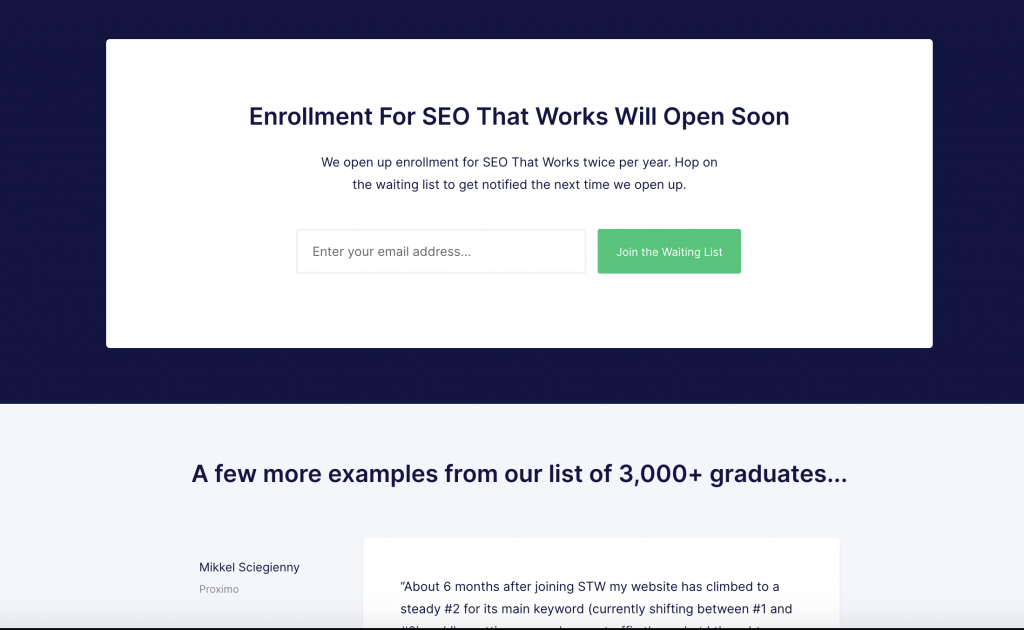

Last updated on
February 8, 2023
No matter how small or big your business, building an email list is the easiest way to market your products. For that, you need to place opt-in forms on your website.
But with so many different types to choose from, marketers have a tough time deciding which opt-in form types will best serve their needs.
Varying sales requirements and visitor behaviors mean that there’s no one-size-fits-all for opt-ins. So how do you choose the right opt-in form your goals? Let’s find out.
Email marketing still continues to be a major source of conversions for online businesses. This is no surprise when 82% of internet users check their inboxes at least once a day.
This staggering statistic is clear evidence of why online businesses want to consistently build their email lists. It’s their best shot at grabbing their prospect’s attention.
But how do you build your email list? It all starts with opt-in forms.
Opt-in forms are a great way of collecting emails from website visitors. You place a neat form on your website, asking visitors if they’d like to join your list. Often, this request is paired with an incentive, like a coupon, a resource, or a loyalty program, in exchange for their email address.
Here’s the MailMunch blog’s opt-in form that tells visitors what to expect from the emails and pulls them in with information that is relevant to them.

Emails from these forms then enable companies to communicate with an engaged prospect in the future. It gives them the perfect opportunity to nurture a relationship, market products, and ultimately nudge leads towards a purchase.
While opt-in forms have immense potential, there are certain best practices to follow when creating any kind of opt-in. Here are the most important ones:
Now that we know the basics, let’s explore our options.
Pop-ups are the most popular type of opt-in forms and often the highest converting as well. This makes them a safe choice for new businesses that are skeptical of experimenting with opt-ins and unsure which form type would work for them.
Pop-ups appear as a small lightbox in the center of the screen mid-scrolling. These interrupt scrolling and can be triggered when a user lands on the page or is about to leave.
Pros:
Cons:
Popularly used for:
Here’s SurfStitch’s popup form in action. It’s triggered after 10 seconds of engagement.

A site-cover is almost like a bigger, much bigger pop-up. It covers the site, as the name suggests, bringing instant attention to it. This form disrupts user scrolling and might appear aggressive at times so marketers should use this carefully. However, there’s no chance of missing it, so it could still generate a lot of leads.
Pros:
Cons:
Popularly used for:
Here’s Neil Patel using a site cover opt-in form, cleverly mixed with a quiz that any marketer would instantly want to take. The incentive here is gaining stats about the true potential of your site.

Top bars or floating bars stick to the top of your page. They appear as a small ribbon at the top, that doesn’t hinder the user experience and quietly sticks around until exited. They’re also implemented site-wide, ensuring that every kind of visitor will be able to notice them.
A top bar also works great for long landing pages with at least two full-screen scrolls where the call-to-action may be hard to find as you go down. This opt-in helps users to convert only when they’re ready since it stays around no matter where the user may be on the page.
Pros:
Cons:
Popularly used for:
Here’s an example of a non-invasive floating bar from Minimalist Baker.

Opt-in forms can also be embedded into a page. This subtle variant of opt-in forms is placed in the post or landing page, making it most visible to visitors that successfully engage with your content.
Embedded forms have lots of placement options; top of the page, side panels, middle of the content, or the footer. You can choose where to embed them depending on your goal. For instance, content upgrades usually appear in the middle of a post, so users get the option to download a more comprehensive version of what they’re reading.
Pros:
Cons:
Popularly used for:
Have a look at one of Backlinko’s landing pages that shows an opt-in towards the end of the page, only after establishing interest in the services.

Slide-in boxes are also very popular opt-ins because of their ability to attract eyeballs without interrupting user scrolling. These slide in from the left or right side of the page, usually after a time delay to ensure visitor engagement.
The great thing about slide boxes is that they aren’t as interruptive as pop-ups or site covers but still attract sufficient attention because of the sudden movement on the page.
Pros:
Cons:
Popularly used for:
Here’s an example from Conversionxl.

While you’ll read a lot about opt-in form comparisons and conversion rates, nothing reveals the true picture better than A/B testing.
Different opt-in forms work for different use cases and different user types, and a lot depends on how you present them. This is why testing is the only sure way of knowing what the right kind of opt-in is for you. Here’s how to do that:
Below we explore the various types and how you can choose opt-ins for your A/B tests.
Choosing opt-in forms can be overwhelming at times, given all the various types and use cases. But knowing your audience, the right incentive to offer, and testing will help you arrive at the perfect opt-in for the best conversion rates.
It’s also recommended that you use a handful of opt-in form types on your site; one for primary lead generation(from active opt-ins like pop-ups), and ideally two others for secondary lead generation (from passive opt-ins like embedded forms). Such a collection will help you target all kinds of visitors coming onto your site and enable you to keep them engaged with your content.
Lastly, don’t stop experimenting!
Momina Ayaz is a Content Marketer at Mailmunch. She loves reading during lunch breaks and witnessing technology reshaping the corporate sphere.
Tags:

M. Usama
April 19, 2024

M. Usama
April 19, 2024

M. Usama
April 18, 2024